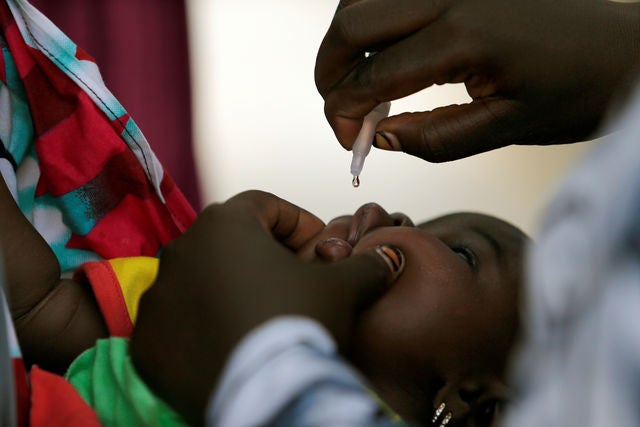Africa’s polio lessons may help Mozambique and Malawi contain new outbreaks
Since the continent became polio-free in 2020, new outbreaks have alarmed African nations, which are now re-examining the continent’s previous successes in keeping the crippling disease at bay

In May 2022, less than two years after Africa was declared polio-free, an outbreak of the disease was reported in Mozambique. This came just three months after health authorities confirmed a case of polio in Malawi.
While this is the first time since 1992 that the wild poliovirus has been detected in Mozambique, and the first time in 30 years Malawi has seen the virus, the region’s “polio-free” certification remains unchanged. This, experts say, is because the virus detected in both countries is not indigenous but rather a strain native to Pakistan.
When the world’s health ministers gathered in Geneva for the 2022 World Health Assembly last month, many from the region called for increased polio vaccination in Africa. The reason, said the World Health Organization’s Regional Director for Africa, Dr. Matshidiso Moeti, was that: “Until the world has halted transmission of all forms of polio, all countries remain vulnerable to outbreaks.” She added that strong planning, implementation, and monitoring were the only ways to ensure every child could be reached.
Strong planning, implementation, and monitoring are a disease mitigation blueprint familiar to Africa. In 1996, Nelson Mandela launched Africa Kicks Out Wild Polio, aimed at creating a polio-free continent through multisectoral collaboration. Along with the WHO and Rotary International, which has long worked to eradicate polio, the campaign encouraged health care workers, governments, and donors to step up their efforts to eradicate the disease that was paralyzing 75,000 children in Africa every year. The effort was made up of three cornerstones: immunization, surveillance, and responding to circulating vaccine-derived polio cases (cVDPVs).
Immunization meant ensuring children received the vaccine outside of, or in addition to, routine immunization schedules. So-called "periodic intensification of routine immunization" (PIRI) was used to ensure the oral polio vaccine (OPV) was administered to every child under five, irrespective of previous vaccination status.
This also meant taking the vaccine directly to those who could not come to clinics to be vaccinated. Whether that meant crossing rivers on boats, or valleys on bikes, health workers ensured distance or access, even in conflict-prone settings, were not barriers to administering OPV drops. Combating vaccine hesitancy became the job of religious and community leaders, who delivered the message that the vaccines were safe and effective. Additional demand was created by pairing vaccination with the distribution of necessities. Free soap, free sugar, free food – and even free additional health care – helped incentivize families to accept vaccination.
Surveillance also played an important role in Africa’s eradication efforts. After the 1988 launch of the Global Polio Eradication Initiative, a more effective detection system was created with the help of international donor support. Within years of the initiative’s launch, a network of labs in 15 countries had – for the first time – capacity to confirm polio diagnoses in less than three hours. This allowed for swift and appropriate disease response by frontline health workers. Meanwhile, community workers and volunteers ensured that local surveillance – first door-to-door and then via mobile phones – quickly identified potential outbreaks.
Finally, when polio or cVDPV was identified, a rapid response team was dispatched to the site of the potential outbreak and, within 72 hours, the risk was assessed and response plans were developed and deployed.
The results of these efforts proved to exemplary. In Africa, where approximately one in five children still do not receive their recommended schedule of routine immunizations, some two million volunteers helped administer a total nine billion OPV doses, including to 1.8 million children. This despite the continent’s vast landscape, extensive rural population, and resource constraints.
But those were not challenges unique to Africa. Today, more than 19 million children worldwide still do not receive the vaccines they need to live healthy lives. Exemplars in Global Health is currently examining how three exemplar countries – two of them in Africa – have increased their DTP immunization coverage in the last two decades, to better understand why they prioritized improving vaccine coverage, how they achieved and sustained increased vaccination rates, and what effective and sustainable solutions resulted from their efforts.
For Mozambique and Malawi, the best way to combat the outbreaks may be found in lessons from the past. “We are supporting southern African governments to step up the polio fight including carrying out large-scale, effective vaccination campaigns to halt the virus and protect children from its damaging impact,” said Dr. Moeti, adding that the WHO is promoting the very same cornerstones of disease surveillance and mass vaccination that made Africa polio-free in the first place.
